Best tomato harvest tips are what every gardener dreams of, right? Imagine baskets overflowing with juicy, sun-ripened tomatoes, ready for salads, sauces, and everything in between. But let’s be honest, sometimes our tomato plants tease us with lush foliage and then disappoint with a meager harvest. Don’t worry, I’ve been there too! That’s why I’m so excited to share some tried-and-true DIY tricks that will help you achieve your most bountiful tomato harvest yet.
Tomatoes have a rich history, originating in South America and gradually making their way into cuisines worldwide. From the simple pleasure of a Caprese salad in Italy to the spicy kick of salsa in Mexico, tomatoes are a culinary staple. But beyond their deliciousness, growing your own tomatoes connects you to this history and provides a sense of accomplishment that’s hard to beat.
Why do you need these best tomato harvest tips? Because maximizing your tomato yield isn’t just about planting and watering. It’s about understanding the plant’s needs, providing the right support, and employing a few clever hacks that can make all the difference. In this article, I’ll walk you through simple, DIY techniques that will help you avoid common pitfalls and unlock the full potential of your tomato plants. Get ready to transform your garden and enjoy the sweet taste of success!
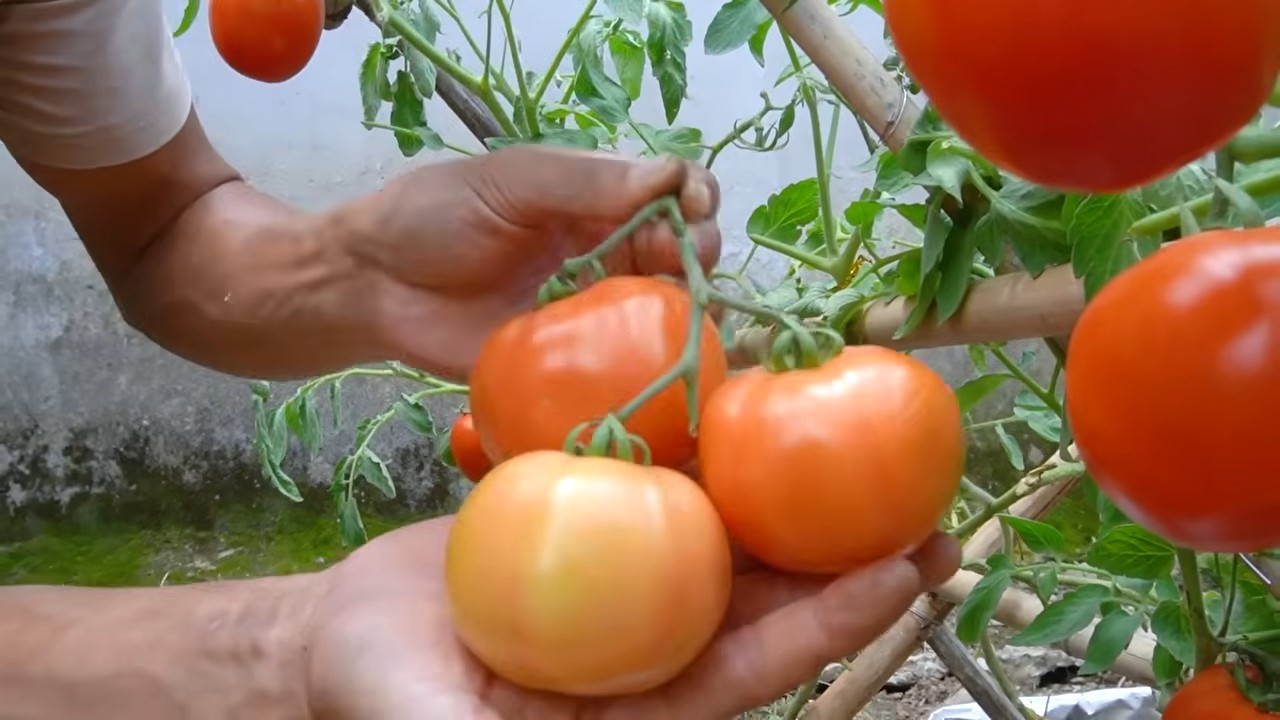
Maximize Your Tomato Harvest: A DIY Guide to Bumper Crops!
Hey fellow gardeners! Are you dreaming of juicy, sun-ripened tomatoes bursting from your vines? I know I am! Getting a truly abundant tomato harvest isn’t always easy, but with a few simple DIY tricks and techniques, you can significantly increase your yield and enjoy delicious tomatoes all season long. Let’s dive into my favorite tips and tricks for a tomato bonanza!
Choosing the Right Varieties
Before we even get our hands dirty, it’s crucial to select the right tomato varieties for your climate and growing conditions. Not all tomatoes are created equal!
* Consider your climate: Are you in a hot, humid area or a cooler, shorter-season region? Determinate varieties (bush tomatoes) mature all at once, making them ideal for shorter seasons. Indeterminate varieties (vining tomatoes) produce fruit continuously throughout the season, perfect for longer, warmer climates.
* Think about your space: Do you have a large garden or just a small patio? Determinate varieties are generally more compact, while indeterminate varieties need staking or caging and can take up a lot of space.
* Choose for flavor and use: Do you want slicing tomatoes for sandwiches, paste tomatoes for sauce, or cherry tomatoes for snacking? There’s a tomato for every purpose!
Some of my personal favorites include:
* ‘Early Girl’: A reliable early-season producer, great for cooler climates.
* ‘Roma’: Perfect for making sauces and pastes.
* ‘Beefsteak’: Large and juicy, ideal for slicing.
* ‘Sungold’: Incredibly sweet and flavorful cherry tomato.
Preparing the Soil: The Foundation for Success
Tomatoes are heavy feeders, meaning they need a lot of nutrients to thrive. Preparing the soil properly is essential for a healthy and productive plant.
* Soil Testing: Before you do anything, test your soil! You can purchase a soil testing kit at most garden centers or send a sample to your local agricultural extension office. This will tell you the pH level and nutrient content of your soil. Tomatoes prefer a slightly acidic soil with a pH between 6.0 and 6.8.
* Amend with Compost: Compost is your best friend! It adds organic matter, improves drainage, and provides essential nutrients. Work a generous amount of compost into the soil before planting. I usually aim for about 2-3 inches of compost worked into the top 6-8 inches of soil.
* Add Fertilizer: Tomatoes benefit from a fertilizer that is high in phosphorus (the middle number on the fertilizer label). Phosphorus promotes strong root development and flowering. I like to use a slow-release fertilizer specifically formulated for tomatoes. Follow the instructions on the fertilizer package carefully.
* Improve Drainage: Tomatoes don’t like soggy feet! Make sure your soil drains well. If you have heavy clay soil, consider adding sand or perlite to improve drainage. Raised beds are also a great option for improving drainage.
Planting Your Tomato Seedlings
Now comes the fun part – planting!
1. Harden Off Seedlings: If you started your tomatoes indoors, you’ll need to harden them off before planting them outside. This means gradually exposing them to outdoor conditions over a period of 7-10 days. Start by placing them in a sheltered spot for a few hours each day, gradually increasing the amount of time they spend outdoors.
2. Dig a Deep Hole: Dig a hole that is deep enough to bury the bottom third of the tomato seedling’s stem. This may seem strange, but tomatoes have the amazing ability to grow roots along their stems. Burying the stem will encourage more root growth, resulting in a stronger, healthier plant.
3. Remove Lower Leaves: Before planting, remove the leaves from the bottom third of the stem. These leaves will be buried underground and will rot if left on the plant.
4. Plant at an Angle (Optional): For extra root development, you can plant the tomato seedling at an angle. Lay the seedling in the hole so that the top of the plant is pointing upwards. This will encourage even more root growth along the buried stem.
5. Add Bone Meal: Sprinkle a small amount of bone meal into the hole before planting. Bone meal is a good source of phosphorus, which will help promote strong root development.
6. Water Thoroughly: After planting, water the tomato seedling thoroughly. This will help settle the soil around the roots and get the plant off to a good start.
Supporting Your Tomato Plants: Staking, Caging, and Pruning
As your tomato plants grow, they will need support to keep them upright and prevent the fruit from touching the ground. Staking and caging are two popular methods of providing support. Pruning is also important for maximizing fruit production.
* Staking: Staking involves tying the tomato plant to a sturdy stake using soft twine or plant ties. This is a good option for indeterminate varieties that tend to grow tall and leggy.
* How to Stake: Drive a sturdy stake into the ground near the tomato plant. As the plant grows, tie the stem to the stake every 6-8 inches. Be sure to tie the stem loosely so that it doesn’t get constricted.
* Caging: Caging involves placing a wire cage around the tomato plant. This provides support for the entire plant and prevents the fruit from touching the ground.
* How to Cage: Place the cage around the tomato plant when it is still small. As the plant grows, it will fill out the cage and be supported by it.
* Pruning: Pruning involves removing suckers (small shoots that grow in the crotch between the main stem and the branches). Pruning helps to improve air circulation, reduce disease, and encourage the plant to focus its energy on producing fruit.
* How to Prune: Use your fingers or pruning shears to remove suckers when they are small (less than 2 inches long). For indeterminate varieties, you can prune all of the suckers that grow below the first flower cluster. For determinate varieties, pruning is generally not necessary.
Watering and Fertilizing: Keeping Your Tomatoes Happy
Tomatoes need consistent watering and fertilization to thrive.
* Watering: Water deeply and regularly, especially during hot, dry weather. Aim to water at the base of the plant to avoid wetting the foliage, which can lead to disease. A good rule of thumb is to water when the top inch of soil feels dry to the touch.
* Fertilizing: Continue to fertilize your tomato plants throughout the growing season. Use a fertilizer that is specifically formulated for tomatoes and follow the instructions on the package carefully. I like to use a liquid fertilizer every 2-3 weeks.
DIY Tricks for a Bigger Harvest
Okay, now for the really fun stuff! Here are some of my favorite DIY tricks for boosting your tomato harvest:
* Epsom Salt: Epsom salt is magnesium sulfate, and magnesium is essential for tomato production. It helps the plant absorb nutrients and promotes strong growth.
* How to Use: Dissolve 1 tablespoon of Epsom salt in 1 gallon of water and spray the foliage of your tomato plants every 2-3 weeks. You can also add Epsom salt to the soil around the base of the plant.
* Baking Soda: Baking soda can help to prevent fungal diseases and improve the flavor of your tomatoes.
* How to Use: Dissolve 1 teaspoon of baking soda in 1 gallon of water and spray the foliage of your tomato plants every 1-2 weeks.
* Coffee Grounds: Coffee grounds are a great source of nitrogen, which is essential for plant growth. They also help to improve soil drainage and aeration.
* How to Use: Sprinkle coffee grounds around the base of your tomato plants. You can also add coffee grounds to your compost pile.
* Eggshells: Eggshells are a good source of calcium, which helps to prevent blossom-end rot (a common problem in tomatoes).
* How to Use: Crush eggshells and sprinkle them around the base of your tomato plants. You can also add eggshells to your compost pile.
* Aspirin: Aspirin contains salicylic acid, which can help to boost the plant’s immune system and protect it from disease.
* How to Use: Dissolve one uncoated aspirin tablet in 1 gallon of water and spray the foliage of your tomato plants every 2-3 weeks.
* Companion Planting: Planting certain herbs and flowers near your tomatoes can help to deter pests and attract beneficial insects.
* Good Companions: Basil, marigolds, nasturtiums, and garlic are all good companion plants for tomatoes.
Dealing with Pests and Diseases
Even with the best care, tomato plants can sometimes be affected by pests and diseases. Here are some common problems and how to deal with them:
* Aphids: These small, sap-sucking insects can weaken tomato plants.
* Treatment: Spray plants with a strong stream
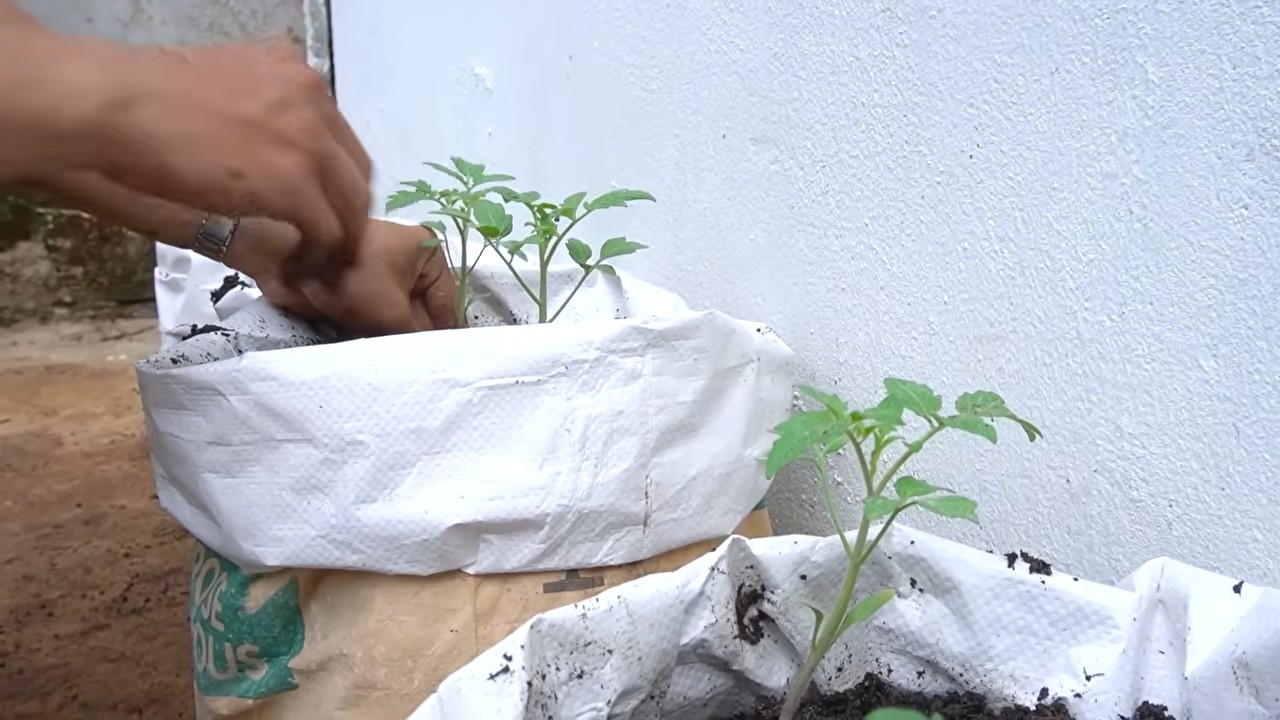
Conclusion
So, there you have it! Mastering these simple yet effective DIY tricks for maximizing your tomato harvest is not just about getting more tomatoes; it’s about connecting with your garden, understanding the nuances of plant care, and ultimately, enjoying the fruits (or vegetables!) of your labor. We’ve covered everything from optimizing sunlight exposure to crafting your own nutrient-rich fertilizer, all designed to give your tomato plants the boost they need to thrive.
Why is this a must-try? Because store-bought solutions can be expensive and often contain ingredients you might not want near your food. These DIY methods are cost-effective, environmentally friendly, and allow you to tailor your approach to the specific needs of your tomato plants. Plus, there’s a certain satisfaction that comes from knowing you nurtured your plants with your own two hands, using ingredients you likely already have in your kitchen or garden.
Don’t be afraid to experiment! For example, if you’re dealing with acidic soil, try adding crushed eggshells to the planting hole to naturally raise the pH. If you’re looking for a natural pest repellent, consider planting marigolds near your tomato plants. They release a compound that deters many common tomato pests. Another variation is to use different types of compost tea. While we discussed a general recipe, you can customize it based on the specific nutrients your soil is lacking. For instance, a compost tea rich in phosphorus can promote better fruit development. You can also try different pruning techniques depending on the type of tomato you are growing. Determinate tomatoes, which grow to a specific size and produce all their fruit at once, require less pruning than indeterminate tomatoes, which continue to grow and produce fruit throughout the season.
Remember, gardening is a journey, not a destination. There will be successes and setbacks, but each experience is a learning opportunity. The key is to observe your plants, understand their needs, and adapt your approach accordingly. These **best tomato harvest tips** are a great starting point, but don’t be afraid to tweak them to suit your specific environment and growing conditions.
We are confident that by implementing these DIY tricks, you’ll see a significant improvement in your tomato yield and the overall health of your plants. Imagine biting into a juicy, sun-ripened tomato that you grew yourself – the taste is simply unmatched!
Now, it’s your turn! We encourage you to try these DIY tricks in your own garden and share your experiences with us. What worked well? What challenges did you face? What variations did you try? Your feedback is invaluable and will help us refine these techniques and share them with other gardening enthusiasts. Share your photos and stories on our social media pages using #TomatoHarvestDIY. Let’s build a community of passionate gardeners who are committed to growing the best tomatoes possible! Happy gardening!
Frequently Asked Questions (FAQ)
1. How often should I water my tomato plants?
Watering frequency depends on several factors, including the weather, soil type, and the size of your plants. Generally, tomato plants need about 1-2 inches of water per week. The best way to determine if your plants need water is to check the soil moisture. Stick your finger about 2 inches into the soil. If it feels dry, it’s time to water. Water deeply and less frequently, rather than shallowly and often. Deep watering encourages roots to grow deeper, making the plants more drought-tolerant. Avoid overhead watering, as this can lead to fungal diseases. Instead, water at the base of the plant.
2. What are the most common tomato pests and diseases, and how can I prevent them?
Common tomato pests include aphids, tomato hornworms, whiteflies, and spider mites. Common diseases include early blight, late blight, Septoria leaf spot, and blossom end rot. Prevention is key! Here are some tips:
* **Choose disease-resistant varieties:** Look for tomato varieties labeled with letters like V, F, N, T, and A, which indicate resistance to specific diseases.
* **Practice crop rotation:** Avoid planting tomatoes in the same spot year after year.
* **Provide good air circulation:** Space your plants adequately to allow for good airflow.
* **Water properly:** Avoid overhead watering and water at the base of the plant.
* **Use organic pest control methods:** Introduce beneficial insects like ladybugs to control aphids. Use insecticidal soap or neem oil for other pests.
* **Remove infected leaves promptly:** If you spot any signs of disease, remove the affected leaves immediately to prevent the spread.
* **Mulch around your plants:** Mulch helps to retain moisture, suppress weeds, and prevent soil-borne diseases from splashing onto the leaves.
3. How do I know when my tomatoes are ripe?
The color of the tomato is the most obvious indicator of ripeness. Tomatoes should be fully colored according to their variety (red, yellow, orange, etc.). The tomato should also feel slightly soft to the touch, but not mushy. A ripe tomato will also have a slight give when gently squeezed. The aroma is another good indicator. Ripe tomatoes have a sweet, slightly earthy smell. The stem should also detach easily from the vine when the tomato is ripe.
4. Can I grow tomatoes in containers?
Yes, you can definitely grow tomatoes in containers! Choose a container that is at least 20 gallons in size to provide enough room for the roots to grow. Use a high-quality potting mix, not garden soil, as garden soil can become compacted in containers. Select determinate or bush varieties of tomatoes, as they tend to be more compact and better suited for container gardening. Provide adequate sunlight (at least 6-8 hours per day) and water regularly. You may also need to fertilize your container tomatoes more frequently, as nutrients can leach out of the soil more quickly.
5. What is blossom end rot, and how can I prevent it?
Blossom end rot is a common tomato problem characterized by a dark, leathery spot on the bottom of the tomato. It is caused by a calcium deficiency, which is often due to inconsistent watering. To prevent blossom end rot:
* **Water consistently:** Maintain even soil moisture throughout the growing season.
* **Add calcium to the soil:** Incorporate bone meal or crushed eggshells into the soil before planting.
* **Avoid over-fertilizing with nitrogen:** Excessive nitrogen can interfere with calcium uptake.
* **Maintain a proper soil pH:** Tomatoes prefer a slightly acidic soil pH of around 6.0-6.8.
* **Mulch around your plants:** Mulch helps to retain moisture and prevent fluctuations in soil moisture.
6. How can I improve the flavor of my tomatoes?
Several factors can influence the flavor of your tomatoes. Here are some tips for improving their taste:
* **Choose the right variety:** Some tomato varieties are known for their superior flavor. Heirloom tomatoes, in particular, are often praised for their rich, complex flavors.
* **Provide adequate sunlight:** Tomatoes need at least 6-8 hours of sunlight per day to develop their full flavor.
* **Water properly:** Inconsistent watering can affect the flavor of your tomatoes.
* **Fertilize appropriately:** Avoid over-fertilizing with nitrogen, as this can result in bland-tasting tomatoes.
* **Allow tomatoes to ripen on the vine:** Tomatoes that are allowed to ripen fully on the vine will have the best flavor.
* **Avoid refrigerating tomatoes:** Refrigeration can diminish the flavor and texture of tomatoes. Store them at room temperature instead.
7. What are the benefits of using compost tea for my tomato plants?
Compost tea is a liquid fertilizer made by steeping compost in water. It is rich in beneficial microbes and nutrients that can improve the health and vigor of your tomato plants. Some of the benefits of using compost tea include:
* **Improved soil health:** Compost tea introduces beneficial microbes to the soil, which can improve soil structure and nutrient availability.
* **Increased nutrient uptake:** The nutrients in compost tea are readily available to plants, making them easier to absorb.
* **Disease suppression:** The beneficial microbes in compost tea can help to suppress plant diseases.
* **Enhanced plant growth:** Compost tea can promote vigorous plant growth and increased yields.
* **Reduced reliance on synthetic fertilizers:** Compost tea is a natural and sustainable alternative to synthetic fertilizers.
8. Is it necessary to prune my tomato plants?
Pruning can be beneficial for tomato plants, especially indeterminate varieties, which continue to grow throughout the season. Pruning helps to improve air circulation, reduce disease, and encourage fruit production. Remove suckers (the small shoots that grow between the main stem and the branches) to direct the plant’s energy towards fruit development. However, determinate varieties, which grow to a specific size and produce all their fruit at once, require less pruning.
9. How do I save seeds from my tomato plants for next year?
Saving seeds from your tomato plants is a great way to preserve your favorite varieties and save money. Choose ripe, healthy tomatoes from disease-free plants. Squeeze the seeds and pulp into a jar and add a little water. Let the mixture ferment for 3-4 days, stirring occasionally. This process helps to remove the gelatinous coating around the seeds. After fermentation, rinse the seeds thoroughly and spread them out on a paper towel to dry completely. Store the dried seeds in an airtight container in

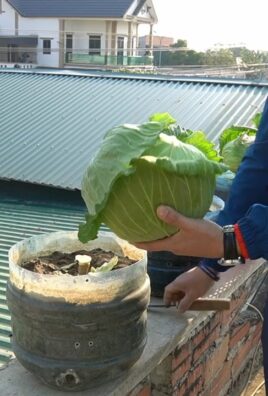
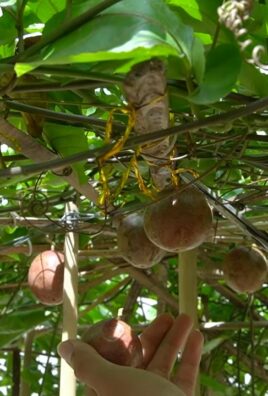
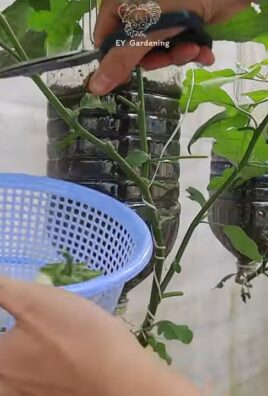
Leave a Comment